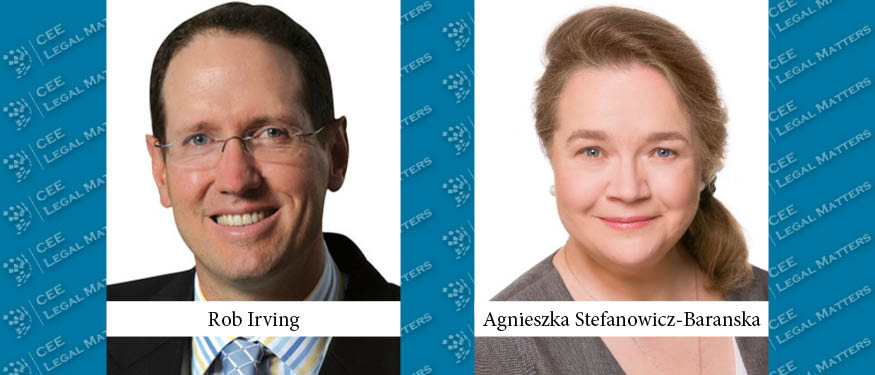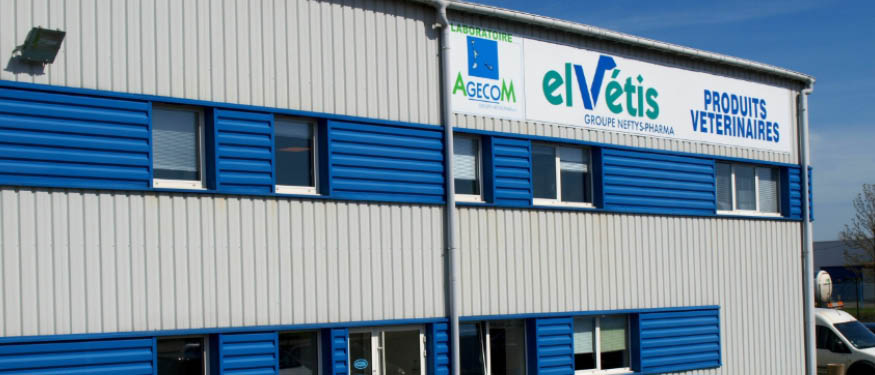Regional periodical league tables ranking M&A activity through the lens of the law firms advising on the deals are often dominated by Baltic law firms, with the CEELM Index special issue of the CEE Legal Matters magazine reflecting the same trend. To better understand why that is so, we spoke with several Partners – from both Baltic firms and other CEE jurisdictions.
A Word Not Used Lightly
In the CEELM Index, the table representing the overall number of client matters reported in CEE in 2020 is dominated by two pan-Baltic law firms – Sorainen and Cobalt, with 116 and 86 deals and cases, respectively. Dentons holds third place with a total of 80 deals reported across many more jurisdictions in CEE.
Furthermore, when looking at lists that rank firms on a national level, a pattern begins to emerge. In Estonia, the top-ranked firm is Cobalt with a total of 46 cases, while Stratulat Albulescu is ranked first in Romania with 15 reported cases. In Lithuania, Sorainen leads with 60 reported cases, while Dentons holds the top position in the Polish market with 42. Cobalt reported the most cases in Latvia, a total of 30, as opposed to 12 reported by NKO Partners in Serbia.
Do the Numbers Tell the Whole Story?
Of course, one simple explanation could be that the amount of work handled by Baltic law firms is simply higher than that of their colleagues in other jurisdictions. Tomas Kontautas, Country Managing Partner at Sorainen in Lithuania reports that Sorainen, and the Baltic firms in general, have kept extremely busy in the past year: “the Baltic economies were not hit by the COVID-19 pandemic that hard, mainly because the first wave was fairly light and sensitive sectors, like tourism, are not as developed in our region as in other parts of Europe.” Kontautas explains that, during the second wave, governments printed a lot of money to deal with the economic backlash of the pandemic, which “caused a fear of inflation, so foreign investors decided to invest the money they were sitting on.” There is, of course, more to that story. He points to Lithuania’s well-regulated tax system, the rule of law, and digitalization as some of the key elements which keep the investors coming: “we are a small, yet transparent, tech-savvy market, with a lot of talented people.”
Indeed, looking at economic parameters, the Baltic region seems to be well off. Estonia, Latvia, and Lithuania together have a population of around six million people, yet each of the states rivals much larger and more populous Poland in terms of GDP per capita. According to the OECD, Poland’s GDP was estimated at slightly over USD 33,000 per capita, whereas estimates for Estonia, Latvia, and Lithuania were USD 38,359, USD 31,367, and USD 38,885, respectively.
In contrast to Kontautas’ report, Romania’s legal market experienced a somewhat different year, as attested by Gelu Maravela, Founding Partner at MPR Partners. According to him, “even though there was a large number of transactions in Romania in 2019, the market was calm through 2020 due to the pandemic.” He explains that the players were very cautious with their investments, even though most businesses were not heavily affected by the crisis. Jelena Gazivoda, Senior Partner at Jankovic Popovic Mitic, echoes this impression when talking about Serbia: “The reported number of transactions is most often the real number of transactions a law firm has worked on.” She explains that several factors influence the total number of deals. “In an election year, which 2020 was in Serbia, there are usually fewer transactions taking place,” she says. COVID-19 also played a role, Gazivoda points out, as the pandemic affected the transactional activity in the first three quarters of 2020. She explains that, after months of uncertainty, the market began to recover in October last year. “The number of transactions done in Serbia changes from year to year,” she says. “In 2020, there were a larger number of lower-valued transactions, which was contrasted with the high-value sale of Komercijalna Banka in December last year,” she explains. But, while two non-Baltic jurisdictions report an indeed slower 2020 – thus backing the numbers, Kontautas still feels it is difficult to tell whether his firm has worked more deals than others listed in the CEELM Index.
One possible explanation raised is that some jurisdictions are more prone to self-filtering what they announce. Andrzej Tokaj, Senior Partner of Penteris in Poland, explains that, potentially, the very fact that the market is larger is what leads to fewer reported deals: “I believe that, because the Polish market is rather bigger than the Baltic markets, it is highly likely that both the number and the size of the deals are greater in Poland.” As a result of that, he says “the threshold for what we think is worth reporting is no doubt higher than in many other smaller jurisdictions.” For context, Tokaj points out that despite working across CEE, he focuses on Polish real estate, where “the value of the transactions can go up to several hundred million Euros.” Similarly, Maravela states: “We are a well-established firm, so we choose to be more discreet and report only on those deals that actually matter.” But it is unlikely for that to fully explain the league tables, since Baltic firms report self-filtering as well with Dace Silava-Tomsone, Managing Partner at Cobalt in Latvia, explaining their approach: “we normally report larger transactions, and we tend not to report day-to-day ‘housekeeping’ deals and matters.”
Do, Don’t Tell
Of course, there are actual legal barriers to advertising for law firms in several of the countries compared, and Gazivoda notes that “local regulation in Serbia does not allow law firms to advertise like some other industries do.”
And even where regulations are eased, there is inertia in place. Tokaj explains that “until ten to fifteen years ago, marketing on the legal market was a big ethical issue, and the Bar Association’s rules related to marketing were strict.” Yet, despite the rules being softened more recently, many lawyers still believe that legal services should not be advertised.
It is ultimately a balancing act, according to Maravela: “In Romania, there is a clash between the common law system and the continental system, in terms of marketing rules.” He explains that, within the common law system, rules are much looser in terms of what you can advertise. In contrast, the French school of the continental system, partly endorsed in Romania, is much stricter, though he believes his firm has found a fine balance between the two.
In contrast, “deals and cases are fairly transparent in the Baltics, so we are usually allowed to report most of them,” Ivars Grunte, Managing Partner at TGS Baltic in Latvia says, noting that the client’s approval is the customary prerequisite to publicizing the deal. Even that, however, touches on yet another barrier for some towards announcing their work, with Gazivoda pointing out that the number of reported deals may also depend on the firm’s clients, as they occasionally object to having their deals publicized.
A Differently-Structured Market
Maravela points out that the legal market in the Baltics is structured differently. It began consolidating around two decades ago, with firms forming pan-Baltic alliances, like Cobalt or Ellex, or integrating into a single firm, like Sorainen. Silava-Tomsone explains that consolidation has helped the Baltic legal market mature over the years, with tough competition across the board: “there is fierce competition not only among top-tier firms but between them and the runners-up.” According to her, the name of the game is staying visible in such an environment, which is achieved, in part, by reporting your achievements to legal publications. Grunte too acknowledges that “competition in the Baltic legal market is tough, so you need to come across as active.” He explains that keeping up with the competitors requires a lot of resources, some of which are invested in promoting TGS Baltic via international publications: “the obvious benefit of our marketing approach is that we stay in focus and make ourselves visible to potential clients.”
In contrast, according to Maravela, Romania has not experienced a similar consolidation process, quite the opposite: “It is quite hard to retain talented lawyers, as they usually want to spin off their own firms. Compared to two years ago, we have more law firms in general, especially boutique law firms that focus on specific areas.” Maravela believes that the fragmentation of the legal market makes it more competitive, as the new, smaller, yet highly-specialized firms wish to compete with even the largest ones, on their niche.
Tokaj too suspects a possible explanation can be found in the structure of the legal market, but from a different perspective: “Polish firms individually report a smaller number of deals because the market is still dominated by large international law firms.” As to why that is less reflected in the league tables, according to him, these international firms are very active in the transactional segment, but their marketing focus is much wider than that of a local, or even a regional firm. “Even though these firms do a lot of work in Poland, the work itself comes from London, or some other economic center, which is why these firms might be focused more on advertising their success to a British clientele, instead of the local one.”
Show Me What You Got
Ultimately, law firms’ marketing strategies are based on, as Gazivoda puts it, “maintaining visibility and promoting our firm’s strengths, as a way to support the core aspect of legal work – the provision of prompt, expert, and dedicated legal assistance to our clients.” There does seem to be a different approach as to how one goes about achieving this.
For Gazivoda, “the main ways of presenting your firm to the market is through quality work, publishing expert reviews and articles, participation in conferences, and within associations of experts.” Maravela too says that while their “less aggressive marketing policy doesn’t mean we are not advertising our services and achievements,” the firm is better served by having its lawyers’ expert reviews and articles published in periodicals and printed publications.
Grunte, on the other hand, says that having his law firm’s achievements reported on creates an online database of the type and value of deals his firm has worked on. If a potential client decided to research the database, it would provide valuable insight into the firm’s capabilities.
Furthermore, when a law firm publicizes deals, especially complex ones, it showcases its capabilities to potential clients. That may be more pertinent today than before because, according to Dovile Burgiene, Managing Partner of Walless in Lithuania, the role of a lawyer has been transformed. “30 years ago, it was expected from a lawyer to provide basic legal services,” she says, whereas “nowadays, law firms need to provide high-quality and sophisticated service, accompanied with deep client industry knowledge, in order to maintain their leading position.” And, as she notes, this does come with perks: “when you establish yourself as a recognizable pan-Baltic firm, you are not limited in terms of the type of mandate you can take.”
This Article was originally published in Issue 8.6 of the CEE Legal Matters Magazine. If you would like to receive a hard copy of the magazine, you can subscribe here.
















